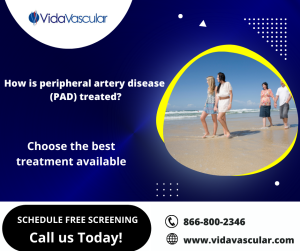Peripheral artery disease (PAD) occurs when the arteries that carries blood to your legs, abdomen, and arms become narrowed, reducing blood flow. The reduction occurs when a tablet, a fatty substance, builds up inside these arteries.
Many people with peripheral artery disease (also called peripheral arterial disease or peripheral vascular disease) have discomfort or pain when walking, called claudicating. The reduced blood flow may damage skin, muscle, and other tissues. In severe cases, blood clots or other problems can block arteries completely and cause limb loss. Treatment can prevent these outcomes.

Risk increases with age—12 to 20 percent of people with PAD are over 60 years old. Smokers and people who have diabetes are also at risk.
Peripheral artery disease results when you have atherosclerosis or hardening of the arteries due to plaque buildup.
Treatment for peripheral artery disease includes:
- Regular physical activity
- Diet changes and adjustments
- Smoking cessation
- Some medications
To schedule a free screening for this and other conditions at a Vida Vascular office in northern Virginia (convenient to Springfield, Fairfax, Alexandria, Arlington, Woodbridge), Maryland (convenient to National Harbor, Oxon Hill, Waldorf, La Plata, and Clinton), and Washington DC.
Call Us!: 866-800-2346
Visit Us: https://www.vidavascular.com/arterial-disease/





